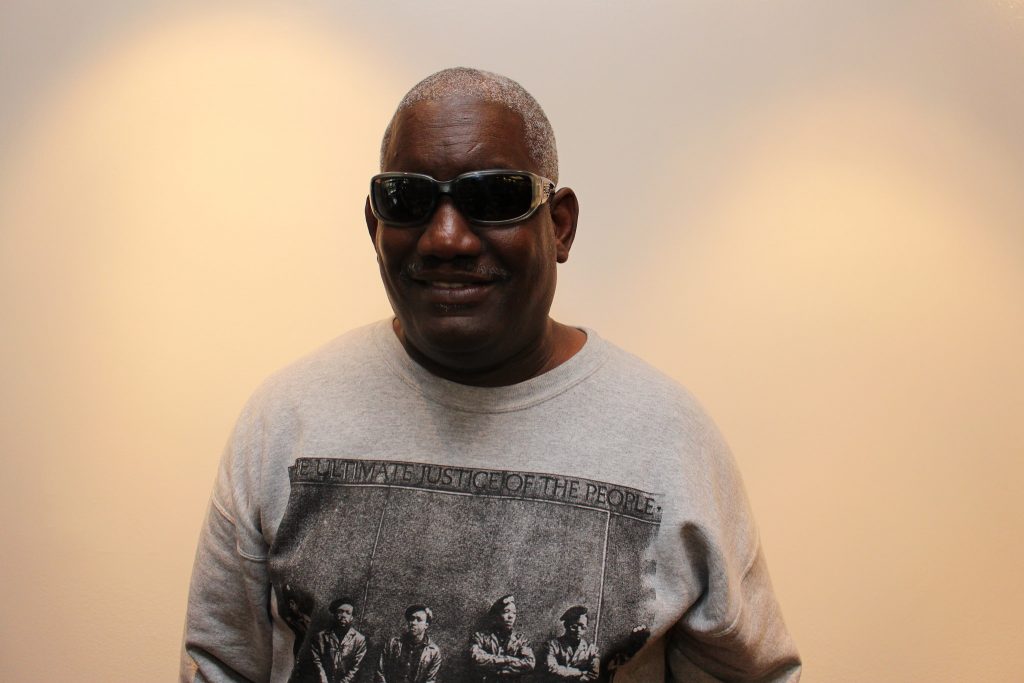In April 1977, nearly 100 disabled people occupied the fourth floor of the Federal Building in San Francisco to demand their civil rights. Almost 38 years later, the unfamiliar story of the 26-day Bay Area protest that ultimately granted basic necessities for people with disabilities is being retold once more at SF State during the “Patient No More: People with Disabilities Securing Civil Rights” exhibit in the administration building.
The traveling exhibit opened Aug. 21 and was coordinated by SF State’s Paul K. Longmore Institute on Disability — a cultural center that focuses on the concept of social justice by introducing new ideas on disability and people who have disabilities through arts and education. On display is a collection of six three-screen panels that illustrate the events that changed disability history.
SF State alumnus and Section 504 protester Dennis Billups was part of the 26-day occupation.
“That was something else,” Billups said with a laugh, as he recalls his experience. “It was a group of so many different people from all over the country coming together in an inaugurated stand to make sure that disabled persons all over this country could get the learning, education and accessibility that they needed.”
Section 504 of the 1973 Rehabilitation Act was drafted to grant civil rights, such as access to public spaces and transportation services to people with disabilities. However, the act was stalled for years by a final signature from the head of the Health, Education and Welfare office that eventually led to protests across the country.

The 26-day sit-in at the HEW offices in San Francisco became the most victorious and longest occupation of a federal building in U.S. history, according to the Paul K. Longmore Institute on Disability.
“What if for the last several decades there was this body of law that had established and codified segregation again?” said Section 504 demonstrator HolLynn D’Lil who took more than 300 photographs during the occupation, many of which are featured in the exhibit. “What if there was this body of law where you could continue to drop minorities into?”
While the occupation continued to grow and days turned into weeks, groups and community organizations like Delancey Street Foundation, Glide Memorial Church and the Black Panthers helped sustain the protest by providing food, blankets and mattresses to those inside the federal building.
Much like the grassroots activism and culture of social justice that the Bay Area has seen, multiple SF State departments, including design and industry, museum studies, journalism and history, came together to create an exhibit accessible for everyone.
The traveling exhibit is open concurrently with the main exhibit at the Ed Roberts Campus, a symbolic hub for people with disabilities located in Berkeley. The traveling exhibit features content from the main exhibit in a much smaller and mobile scale. Both the traveling and main exhibit include a braille book and audio guide tracks.
“The 504 demonstration is not only unknown in the Bay Area, it’s surprisingly unknown in disability communities too,” said Emily Beitiks, assistant director of the Paul K. Longmore Institute on Disability. “By teaching this history, we are confident that we can change people’s limited perceptions of people with disabilities. I doubt that anyone will leave our exhibit thinking ‘Oh, those poor, pathetic people!’ after seeing the creativity and courage of the 504 protesters.”
Throughout the main exhibit there are Braille rail stations, located in the rotunda, with added pieces of historical information. There is also a larger-than-life black and white mural of photographs of the 1977 protest.
“We had a little bit of fun, so that a blind person reading Braille could become the expert for sighted people,” said Catherine Kudlick, director of the Paul K. Longmore Institute on Disability and SF State history professor. “It’s always the sighted people getting the information that the blind don’t; that’s a rare thing.”
The opening at SF State included both students, professors and Section 504 demonstrators and supporters celebrating a moment in history that changed the way people looked at disability.
“I am so happy to be here, so happy to be a part of this great event to make sure America knows that prejudice does not have to be allowed anyplace, anywhere, anytime,” said Billups, who was also known as the chief morale officer of the Section 504 sit-in, during the opening celebration at SF State.
The “Patient No More” exhibit at the Ed Roberts Campus will be on display until mid-December. The traveling exhibit at SF State is free and open from 8 a.m. to 5 p.m. until Sept. 4, and will move across six other Bay Area locations throughout the year.






fashionlurker • Aug 27, 2015 at 8:24 pm
HolLynn D’Lil has also written a fascinating and moving book about the protest called Becoming Real on 24 Days. It’s her personal account of the takeover and is full of historical photographs and documents. You can find out more on her website: becomingrealin24days.com